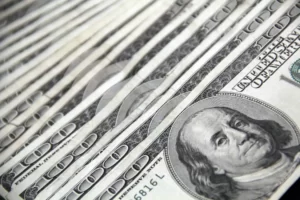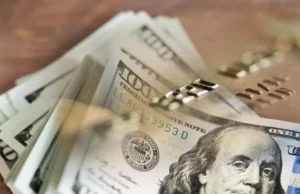First of all, ATMs, known for their ability to hold varying amounts of cash, have revolutionized banking with convenient, 24/7 services. These machines not only facilitate transactions but also raise questions about how much cash an ATM can hold. With such widespread use, it is no wonder that ATMs have become an integral part of modern banking and commerce.
Barclays Bank in London first introduced the ATM concept in the late 1960s. However, it was not until the 1980s that ATMs gained popularity and became commonplace on city streets and bank premises. Today, ATMs are found in almost every corner of the world and serve millions of customers every day.
The importance of ATMs in the world of banking and commerce cannot be overemphasized. These ATMs provide convenience and accessibility, allowing customers to access their funds anytime and anywhere. Whether withdrawing cash to make a purchase or depositing a check, ATMs offer a fast and secure way to conduct financial transactions.
A common query is: exactly how much cash can an ATM hold? This is a common question among those who want to know the capabilities of these machines. The answer depends on several factors, such as the design and specifications of the ATM model. While some ATMs can hold a few thousand dollars, others are equipped to hold significantly larger amounts to serve high demand locations.
In conclusion, understanding how much cash an ATM can hold is key to appreciating their role in banking and commerce. Their origin and evolution have transformed the way we handle transactions, making them an indispensable part of modern banking.
In a Nutshell
- Understanding how much cash an ATM can hold: some models are equipped to hold hundreds of bills and others thousands.
- An ATM’s cash capacity, addressing the question of how much cash an ATM can hold, depends on its size and design.
- On average, addressing how much cash an ATM can hold, the capacity ranges from $20,000 to $100,000, varying by model and operator preference.
- ATM owners or operators may choose to periodically replenish the machine with cash to ensure that it can meet customer demand, reduce the risk of running out of cash and prevent theft attempts.
- ATMs are often equipped with sensors and alarms to detect unauthorized access or tampering, providing an additional layer of security for the cash they contain.
- The exact cash capacity of an ATM is usually not disclosed to the public for security reasons.
- Larger capacity ATMs are often installed in high traffic areas, such as airports, casinos and shopping malls, where large volumes of cash transactions are expected.
- The cash in an ATM is considered the property and liability of the operator, who is responsible for securing and managing the funds.
- Despite advances in digital payments, ATMs remain an essential component of the banking infrastructure, providing convenient access to cash for individuals and businesses.
It is not the man who has too little, but the man who craves more, that is poor.
Lucius Annaeus Seneca the Younger
How ATMs Work
ATM technology has revolutionized the way we access money. ATMs combine advanced technology, security measures and financial systems to offer convenient banking services.
In answering how much cash an ATM can hold, it’s important to note that they use cassettes or vaults for storing and dispensing money. Regarding how much cash an ATM can hold, these compartments store bills of various denominations, like $20 to $100. The precise answer to how much cash an ATM can hold depends on the number of bills it’s designed to store.
To safeguard the significant amount of cash an ATM can hold, various security measures are in place. Encryption technology ensures secure communication between the ATM and the bank’s network, protecting against unauthorized access. In addition, ATMs are often equipped with surveillance cameras and trigger sensors to detect tampering or suspicious activity.
Banks plan meticulously to determine how much cash an ATM can hold, considering various factors. Factors such as location, usage patterns and available funds are taken into account. Banks set limits for each ATM based on their expected demand and the need to maintain an adequate cash supply.
How much cash can an ATM store? The actual amount varies, but ATMs typically hold several thousand bills. The size and type of bills an ATM can hold depends on its configuration and design. Most ATMs hold a variety of bill sizes, including the standard 2.6 inch by 6.1 inch bills used in most countries.
In conclusion, ATMs operate using advanced technology, secure storage and sophisticated security measures. They store and dispense money through cassettes or chambers that can hold bills of different denominations. The capacity of an ATM depends on its model and design, and banks determine how much cash each ATM should hold based on factors such as location and expected demand.
Exploring the Key Question: How Much Cash an ATM Can Hold
The key question that often arises when considering ATMs is: “How much cash an ATM can hold?”. The cash storage capacity of an ATM depends on several factors.
First, the maximum cash storage limit varies depending on the particular model of ATM. Newer models typically have greater storage capacity than older models. These limits can range from a few thousand dollars to tens of thousands of dollars.
Several external factors also influence the cash storage capacity of an ATM. The location of the ATM plays an important role, as ATMs located in high traffic areas tend to require more frequent cash replenishment. In addition, frequency of use is a determining factor. ATMs frequented by a large number of users will need more cash to meet demand.
Bank policies also affect cash storage capacity. Some banks may have strict policies limiting the amount of cash an ATM can hold at any given time, while others may allow larger amounts.
On average, ATMs hold varying amounts of cash, but typically carry between $10,000 and $30,000. This range may vary depending on the ATM model and your usage patterns.
It is essential to note that cash storage capacity can also vary by ATM type. For example, stand alone ATMs typically hold less cash than those located in bank branches or shopping malls.
Finally, cash storage capacity may vary from country to country or region to region. Factors such as different banking regulations and consumer behavior influence the cash needs of ATMs in different locations.
In summary, the cash storage capacity of an ATM is determined by factors such as ATM model, location, frequency of use and bank policies. Understanding these factors helps to get a clearer idea of how much cash an ATM can hold.
The Highest Possible Sum an Atm Can Hold
Curious about how much cash an ATM can hold? Well, the maximum capacity of ATMs varies depending on several factors. Several studies and real life cases have explored this topic to shed light on this intriguing question.
Research into how much cash an ATM can hold shows a range from $20,000 to $250,000, depending on the particular model and design. Some advanced ATMs with high security features can hold up to $500,000. However, it is important to note that these figures represent the upper limit and may not be the norm for all machines.
It is worth bearing in mind the limitations of storing large amounts of cash in ATMs. First, ATM theft and vandalism are potential risks associated with machines that store large sums of cash. A substantial reserve, reflecting how much cash an ATM can hold, might attract theft attempts due to its size. In addition, they also increase the cost and effort required to constantly reload and manage these ATMs.
Another implication of maintaining large cash reserves is the opportunity cost of blocking funds. Although having more cash in ATMs benefits users, it signifies a large portion of money remains idle, highlighting the importance of managing how much cash an ATM can hold.
In conclusion, ATMs can store anywhere from thousands of dollars to hundreds of thousands of dollars. Deciding on how much cash an ATM can hold involves weighing the risks and drawbacks of storing large cash sums.
Practical Implications and Use Cases
Bank managers optimize cash management by analyzing withdrawal frequencies and amounts, considering how much cash an ATM can hold. For example, if a particular ATM experiences an increase in withdrawals on weekends, it would be prudent to schedule cash replenishment accordingly to ensure uninterrupted service.
Best Practices for Managing Cash at ATMs
Bank managers should follow best practices when managing cash at ATMs. This includes implementing robust security measures, such as surveillance cameras and alarm systems, to deter theft or vandalism. In addition, regular audits should be conducted to reconcile transaction records with the actual cash on hand. It is also vital to establish strict protocols for reloading ATMs, limiting access to authorized personnel only.
For Business Owners
For business owners, assessing the need for an on site ATM includes understanding how much cash it can hold. Factors to consider include traffic volume, customer payment preferences, and the availability of nearby ATMs. If a business frequently handles cash payments or operates in an area with limited access to conventional banking services, having an ATM on site can be beneficial. In addition, having an ATM on the premises may attract more customers who appreciate the convenience of easy access to cash.
Ensure Sufficient Cash Availability for Customers.
Another practical implication for business owners is the need to ensure a sufficient supply of cash at their ATMs. This involves regularly monitoring cash levels, especially during peak hours, holidays and weekends. Forecasting cash demand helps ensure ATMs maintain the optimal amount of cash they can hold without running dry. Establishing a relationship with a reliable cash management service provider can streamline the ATM replenishment process and ensure sufficient cash availability for customers.
In general, both bank managers and business owners should pay particular attention to the practical implications and use cases of ATMs. By implementing effective cash replenishment strategies, adhering to best practices for ATM cash management, determining the need for an on site ATM, and ensuring sufficient cash availability for customers, these stakeholders can optimize ATM usage and improve the customer experience.
Myths and Misconceptions About Money in ATMs
Wondering how much cash an ATM can hold? Let’s debunk some misconceptions, clear up confusion about withdrawal limits and address security fears.
Myth: ATMs hold only a limited amount of cash. Fact: ATMs have different cash capacities depending on the type and location. Modern ATMs, when considering how much cash they can hold, typically store several thousand bills, ready for numerous daily transactions.
Myth: Maximum cash withdrawal limits are fixed. Fact: Maximum withdrawal limits, influenced by how much cash an ATM can hold, are set by banks or owners and can be tailored for customer needs. If you need to withdraw a larger sum, contact your bank to inquire about possible authorizations.
Myth: ATMs are not safe. Fact: ATMs are designed with multiple security measures in place to ensure safe transactions. These include secure enclosures, video surveillance and fraud prevention systems. Always use caution and cover your PIN when entering it to protect your personal information.
In conclusion, ATMs have significant cash capacity, withdrawal limits can be adjusted and are generally safe to use. Knowing facts, like how much cash an ATM can hold, eliminates worry, empowering confident financial management.
The Future of ATMs in a Digital World
Trends affecting ATM usage are constantly evolving in response to changing consumer behavior and technological advances. The rise of digital banking has significantly influenced ATM usage. With the convenience of online banking and mobile payments, traditional ATM transactions, such as cash withdrawals and balance inquiries, are increasingly being conducted through digital platforms.
In a digital economy, questions about the future of physical currency and how much cash an ATM can hold become prominent. Despite digital shifts, ATMs remain crucial for accessing cash, prompting interest in how much cash an ATM can hold. While the use of physical currency may decline, ATMs are likely to remain vital for certain transactions, such as emergencies and personal preferences.
Adapting to change, ATMs evolve with technologies that consider the pivotal question: how much cash can an ATM hold? With biometric authentication, ATMs enhance security, a vital aspect considering how much cash an ATM can hold. In addition, ATMs are incorporating interactive touch screens, personalized customer experiences, and features such as mobile app integration.
ATMs are also expanding their functionality to meet the changing needs of consumers. In addition to withdrawing and depositing cash, ATMs’ services, including check cashing and bill payment, reflect their evolution while holding significant cash capacities. New functions add versatility to ATMs, especially considering the varying amounts of cash they can hold in a digital era.
In conclusion, as the banking industry continues to evolve toward digital platforms, ATMs remain an essential component. They adapt to the changing landscape by offering innovative technologies, expanding functionality and ensuring access to physical cash when needed. The amount of cash an ATM can hold depends on its design and capacity, which vary across different models and manufacturers.
Wrap Up
In summarizing this detailed look at ATMs, it’s clear that the key focus revolves around understanding how much cash an ATM can hold. This aspect forms the core of ATM functionality, highlighting the intricate balance between technology, security, and financial management in these essential banking tools.
Since their inception in the late 1960s, ATMs have significantly evolved, adapting to the needs of a digital world while consistently focusing on the critical question of how much cash an ATM can hold.
The capacity of ATMs to hold cash, which can range from a few thousand to several hundred thousand dollars, is determined by a variety of factors including the machine’s model, its location, and the policies of the operating bank. This knowledge is vital for ensuring efficient and uninterrupted transaction services for millions globally, while also managing the risks associated with storing large amounts of cash.
For bank managers and business owners, this exploration provides crucial insights. They must address challenges like optimizing cash levels in ATMs, enhancing security measures, and catering to customer needs, all guided by the understanding of how much cash an ATM can hold.
Looking ahead, it’s evident that ATMs will continue to evolve, integrating more advanced technologies and expanding their roles in the banking sector. Despite these changes, their fundamental purpose remains unchanged: to provide secure and convenient access to cash.
ATMs stand as dynamic components of the global financial system, adeptly balancing user convenience with the logistical and security complexities of managing how much cash an ATM can hold. As the banking industry progresses, ATMs are expected to adapt accordingly, maintaining their essential role in everyday financial activities.
FAQs

How much cash an ATM can hold varies depending on its size and model. On average, most ATMs hold between $100,000 and $200,000 in cash.
Yes, ATMs typically have a minimum cash balance requirement to ensure that they can meet customers cash withdrawal needs. This minimum amount may vary depending on factors such as location and usage pattern.
ATM refill frequency, a factor in determining how much cash an ATM can hold, varies by location, transaction volume, and internal space. Typically, to maintain sufficient levels of how much cash an ATM can hold, they are refilled multiple times a week.
If an ATM runs out of cash, it will no longer be able to dispense cash. However, customers can continue to use the ATMs other functions, such as balance inquiries or fund transfers, until it is refilled.
Occasionally, during busy periods or peak hours, an ATM may run out of cash due to high customer demand. However, most banks and ATM operators have processes in place to monitor and reload ATMs quickly to avoid these situations.
Article sources
At Capital Maniacs, we are committed to providing accurate and reliable information on a wide range of financial topics. In order to achieve this, we rely on the use of primary sources and corroborated secondary sources to support the content of our articles.
Primary sources, such as financial statements and government reports, provide firsthand evidence of financial events and trends. By using primary sources, we are able to directly reference information provided by the organizations and individuals involved in these events.
Secondary sources, such as financial analysis and commentary, interpret and analyze primary sources. While these sources can be useful for providing context and background information, it is important to use corroborated sources in order to ensure the accuracy and reliability of the information we present.
We take pride in properly citing all of our sources, both primary and secondary, in order to give credit to the original authors and to allow our readers to verify the information for themselves. We appreciate your trust in our website and are committed to upholding the highest standards of financial journalism.
- Prineta – How much cash can the average ATM hold?
- Npr.org – Need Cash? Some Thieves Are Taking The Whole ATM : NPR
- Bitcovault – How much money does and ATM hold – ATM hold deposit
- Quora – How much cash can the average ATM machine hold? – Quora
- Pistonheads – How much cash can the average ATM machine hold? – Quora



























